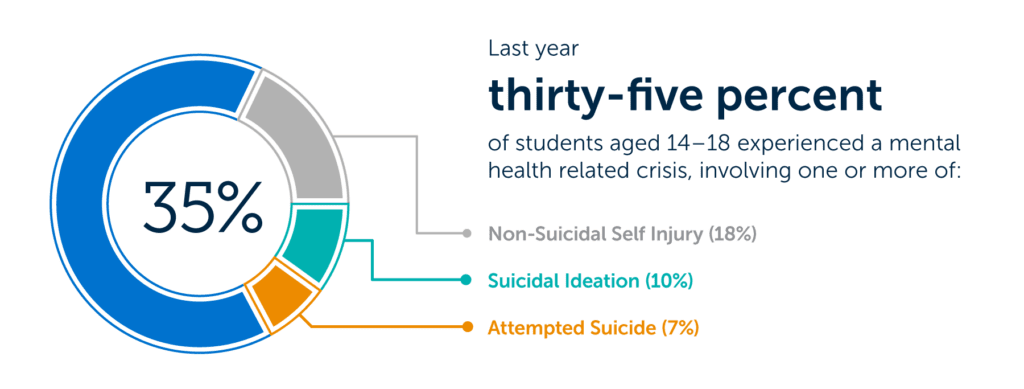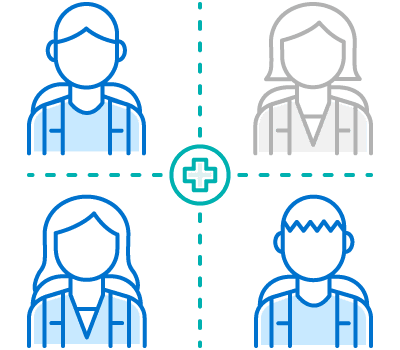As youth rates of severe anxiety, depression, and suicide have risen, school districts have become the “de facto” provider of adolescent mental health care. However, schools face multiple systemic barriers that impede their ability to support students in crisis.


Districts are becoming the first point of care
Schools are the adolescent mental health providers of necessity and choice. Students often have nowhere else to go for mental health care. Even when external care is an option, data show that students are far more likely to utilize school-based mental health services.

3 in 4 children receiving mental health care did so in a school setting

Youth are 21 times more likely to visit a school based health clinic for their mental health care than a community based clinic
Rapid access to mental health care is essential for student success. Students struggling with psychological or emotional needs are more likely to be distracted in class, unable to attend school, or drop out of school entirely. Districts have no choice but to take the lead in helping students be well enough to learn.

5-9% of teens require hospitalization or prolonged absence from school due to mental health issues

50% of students with serious mental health issues drop out of high school
Four preventable barriers impact student outcomes
Research highlights four critical barriers to effectively supporting students in crisis. The roadmap below outlines essential strategic responses to each challenge, then lists proven, innovative practices to help your district care for students when they need it the most.

Persistent stigma around mental health prevents identification and referrals

Students needing support are often identified when crisis occurs

Districts struggle to scale and coordinate access to external clinical care

Poor transitions between care providers increase risk of reoccurrence


Reduce mental health stigma via year-round student and family engagement
- Ongoing peer-to-peer student education and mentoring
- Campaign to share experiences overcoming mental health struggles
- Wellness-focused family workshop series


Broaden and strengthen your crisis identification and referral network
- Quick access crisis reference card
- First-responder “handle with care” notification
- Online monitoring to identify students of concern


Coordinate and scale access to internal and external mental health care
- Group model cognitive behavioral therapy
- Join district community standards of practice
- District led community mental health service allocation
- Tech-enables mental health support


Improve coordination and support during care transitions
- External referral coordination program
- Post-discharge case management
- Coordinated reentry process
Assess your district’s readiness to support adolescent mental health
Please select all responses to the diagnostic questions that apply to your district and provide the email connected to your EAB account to gain access to the full report. Aggregated responses to the diagnostic will be shared in an upcoming webinar. No individual district information will be shared.
Want to implement supports?
Are Districts the Nation’s Adolescent Mental Health Care Providers?
There are various barriers to adolescent mental health support at schools. This resource covers a handful of innovative districts have developed replicable and scalable practices that hurdle these obstacles.
Serving Students with Mental Health Concerns
Summary This report explores effective interventions for early elementary school students with mental health concerns. It focuses on both in-classroom and out-of-classroom support systems, as well as ways to engage students’ guardians in mental health service delivery. Key observations from our research 1. Many profiled districts use student support teams to coordinate mental health service […]